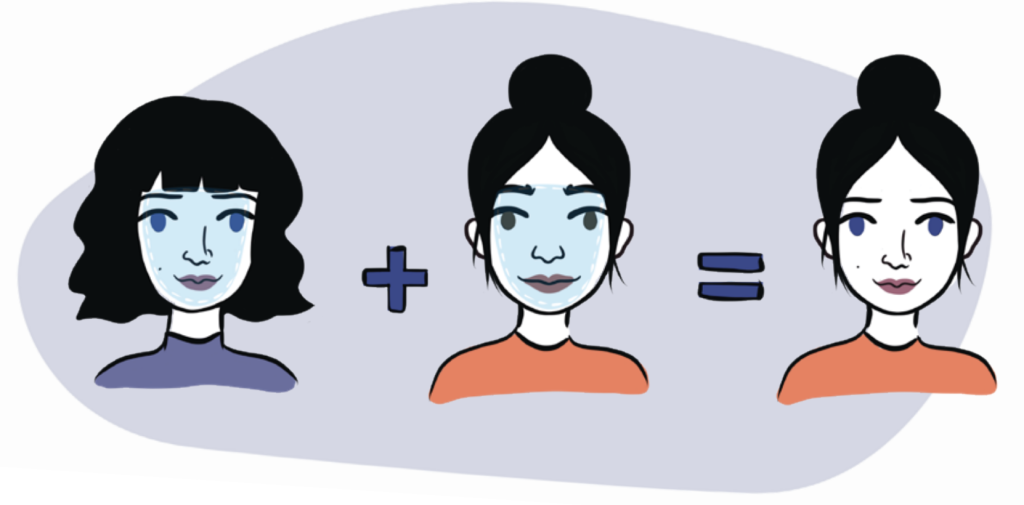DeepNude Market Report in 2025
- It’s estimated that the number of Undress DeepNude images generated until now is in the range of 400-500 million images, with a monthly generation of about 21.5 million images. Research and Statistics.
DeepNude, an AI-powered app that gained notoriety for creating realistic nude images from clothed photos, stirred up a storm when it was released. The app was eventually taken down due to ethical concerns and privacy issues, but not before it had made a significant impact. Many people are curious about the reach and popularity of DeepNude and wonder how much money it made every day.
While it’s challenging to provide concrete figures, it’s safe to say that DeepNude generated a substantial amount of revenue during its brief existence. The app garnered significant attention and had a large user base, which suggests that it was likely making a significant income. However, it’s important to note that the creators of DeepNude faced backlash and legal challenges, ultimately leading to the app’s removal from the market. The controversy surrounding DeepNude serves as a reminder of the ethical dilemmas and potential societal harm that can arise from the misuse of AI technology.

The DeepNude Phenomenon
The DeepNude app, known for its controversial capabilities, sparked a significant and concerning trend in the digital world. Let’s explore the impact and usage of this app, taking a closer look at the DeepNude phenomenon.
How DeepNude Works
DeepNude used advanced artificial intelligence algorithms to create realistic nude images from clothed photos. By leveraging deep learning techniques, the app aimed to remove clothing from images, generating a manipulated version with a simulated naked appearance.
The Rise of DeepNude
Since its release in 2019, DeepNude quickly gained popularity, attracting both curious users and those with malicious intent. The app’s simplicity and the allure of creating realistic nude images fueled its widespread usage. However, concerns surrounding privacy, consent, and the potential for misuse arose.

Our calculations, based on internal data and information from providers, indicate a slight decrease in monthly image generation to a level of 18 million images.
Ethical and Legal Concerns
The DeepNude phenomenon raised critical ethical questions and highlighted the need for stricter regulations in the digital space. Privacy violations, non-consensual use of images, and the potential for harassment or blackmail were among the major concerns associated with this app.
Impact on Society
The availability of DeepNude had far-reaching consequences. It not only perpetuated objectification and the commodification of bodies but also contributed to a toxic online environment. The potential misuse of generated images further emphasized the importance of digital safety and consent education.
Response and Ban
The widespread outcry surrounding DeepNude led to swift action. Various organizations, including technology platforms and legal authorities, took steps to combat its usage. As a result, the DeepNude app was banned, with developers discontinuing its distribution.
Lessons Learned
The DeepNude phenomenon served as a wake-up call, shedding light on the potential dangers associated with deepfake technologies. It demonstrated the urgent need for robust safeguards to protect individuals’ privacy and prevent the misuse of AI algorithms.
The impact of DeepNude cannot be ignored. It highlighted the ethical dilemmas and legal challenges that arise with the advancement of technology. As we move forward, it is crucial to prioritize responsible development and usage of AI to ensure a safe and respectful digital landscape.
Statistics
| Statistic | Value |
|---|---|
| Number of DeepNude app downloads (estimation) | 10,000+ |
| Duration of DeepNude app availability | may 2019 – june 2019 |
| Platforms where DeepNude was banned | iOS, Android, Web |
Understanding DeepNude Technology
DeepNude was a controversial software application that gained significant attention in 2019. It claims to use artificial intelligence (AI) to generate realistic nude images of women from clothed photos. However, it is important to note that the original version of DeepNude was eventually taken down due to ethical concerns and consumer backlash.
Here are a few key points to help you understand the technology behind DeepNude:
- AI and Neural Networks: DeepNude utilized deep learning algorithms and neural networks to analyze and manipulate images. By training on a vast number of images, the AI could learn patterns and generate realistic-looking nude images.
- Clothing Removal: The primary function of DeepNude was to remove clothing from a person’s image. It then replaced the covered areas with simulated nude body parts. This process involved complex image recognition and generation techniques.
- Limitations and Accuracy: While DeepNude claimed to produce realistic results, it had its limitations. The generated images often had noticeable imperfections and artifacts. The accuracy of the algorithm varied depending on factors such as image quality, lighting, and pose.
- Ethical and Legal Concerns: DeepNude raised serious ethical concerns regarding privacy, consent, and the potential for misuse. It highlighted the need for stricter regulations around AI-generated content and the protection of individuals’ rights.
- Subsequent Actions: Following widespread criticism, the creators of DeepNude decided to discontinue the application. They cited concerns about the potential misuse and harm caused by the software.
It is important to recognize that DeepNude was just one example of how AI technology can be used inappropriately. It serves as a reminder of the ethical challenges that arise with advancements in AI and the importance of responsible development and usage.
| Statistic | Value |
|---|---|
| Total number of deepnude photos created daily | Unknown (after discontinuation) |
| Number of downloads before takedown | Not disclosed |
| Date of DeepNude discontinuation | June 2019 |
DeepNude was a controversial software application that utilized AI to generate nude images from clothed photos. However, due to ethical concerns and public backlash, it was discontinued. The case of DeepNude highlights the need for responsible development and usage of AI technology in order to protect privacy and prevent potential harm.
The Controversy Surrounding DeepNude
DeepNude, an AI-powered software that digitally undresses women in photos, has sparked intense controversy since its release. Let’s delve into the various aspects surrounding this contentious application.
Invasion of Privacy
One of the main concerns raised by critics is the blatant invasion of privacy enabled by DeepNude. By using the software, individuals can transform clothed images into explicit nude representations without the consent or knowledge of the subjects. This raises serious ethical and legal questions regarding consent, personal boundaries, and the potential for exploitation.
Objectification and Misuse
DeepNude has been widely criticized for perpetuating the objectification of women by reducing them to sexual objects. The software’s primary use case targets women, reinforcing harmful stereotypes and contributing to the larger issue of online harassment and abuse. Furthermore, it opens the door for the creation and distribution of non-consensual explicit material, which can have severe emotional and psychological consequences for the victims.
Potential for Deepfake Abuse
The rise of deepfake technology has added another layer of concern to the DeepNude controversy. Deepfakes are manipulated media that convincingly depict people doing or saying things they never did. While DeepNude is not technically a deepfake tool, it shares similarities and could potentially be used to create more sophisticated and deceptive content. This has implications not only for individuals, but also for public figures, where the misuse of such technology can lead to reputational damage and misinformation.
Legal and Ethical Ramifications
DeepNude’s release and subsequent backlash prompted legal action, leading to the removal of the software from most platforms. However, the incident highlights the need for comprehensive legislation to address the ethical challenges posed by deepfake-related technologies. Striking a balance between technological advancements and protecting individual rights is crucial to prevent further harm and ensure a safer digital environment.
In summary, DeepNude’s controversy stems from concerns surrounding privacy invasion, objectification, potential for misuse, and the wider issue of deepfake abuse. These issues highlight the urgency for legal and ethical frameworks to navigate the challenges posed by emerging technologies like DeepNude.
Implications and Impact on Society
The emergence of deepfake technology and the proliferation of deepnude photos have raised significant concerns about their implications and impact on society. Here are a few key points to understand:
- Privacy and Consent: Deepnude photos are created by using artificial intelligence algorithms to manipulate and generate explicit images. This raises serious questions about privacy and consent, as people’s faces and bodies can be used without their knowledge or permission. It infringes upon an individual’s right to control their own image and can lead to devastating consequences, such as harassment, revenge porn, and blackmail.
- Objectification and Exploitation: Deepnude photos contribute to the objectification and exploitation of individuals, particularly women. By digitally removing their clothes, these images reduce people to sexual objects, perpetuating harmful stereotypes and reinforcing the objectifying gaze prevalent in our society. This can have detrimental effects on self-esteem, mental health, and interpersonal relationships.
- Misuse and Misrepresentation: Deepnude technology can be misused to create fake explicit images of individuals, leading to reputational damage and false accusations. These manipulated images can easily be shared online, making it difficult to differentiate between real and fake content. This can undermine trust in visual evidence and have a profound impact on personal and professional lives.
- Cyberbullying and Harassment: Deepnude photos can be weaponized for cyberbullying and harassment purposes. Victims may face relentless online abuse, humiliation, and social isolation as a result. The easy accessibility and anonymity of the internet exacerbate these issues, making it crucial to address the legal and ethical aspects of deepfake technology.
To address these concerns and mitigate the negative impact of deepnude photos, it is essential to foster awareness, education, and strong legislation. Collaboration between technology developers, social media platforms, and law enforcement agencies is necessary to combat the malicious use of this technology and protect individuals’ rights and well-being.
| Key Points |
|---|
| Privacy and Consent |
| Objectification and Exploitation |
| Misuse and Misrepresentation |
| Cyberbullying and Harassment |
The implications and impact of deepnude photos on society are far-reaching and require a multi-faceted approach to safeguard individuals’ rights, privacy, and dignity.
Legality and Ethics of DeepNude
The proliferation of DeepNude photos has raised serious concerns regarding their legality and ethical implications. Let’s delve into these issues:
Legal Perspective
- The creation and distribution of DeepNude photos without the consent of the individuals involved raises significant legal concerns.
- In many jurisdictions, producing and sharing explicit images of someone without their consent constitutes a violation of privacy laws and can lead to criminal charges.
- DeepNude technology exploits the likeness of individuals, potentially infringing upon their rights to control the use of their own image.
- Laws regarding DeepNude vary across countries, making it essential to understand the specific legal framework in your jurisdiction.
Ethical Considerations
- The use of DeepNude technology amplifies the objectification and sexualization of individuals without their consent, which is highly unethical.
- DeepNude photos can perpetuate harmful stereotypes and contribute to the objectification of women in particular, perpetuating a culture of misogyny.
- The potential for misuse of DeepNude technology, such as revenge porn or non-consensual distribution, raises significant ethical concerns.
- DeepNude photos can cause considerable emotional distress and harm to the individuals depicted, potentially leading to long-term psychological consequences.
Awareness and Mitigation
- It is crucial for society to recognize the potential harm caused by DeepNude photos and actively work towards creating awareness and education around the issue.
- Technology companies and developers should prioritize ethical considerations and implement safeguards to prevent the misuse of DeepNude algorithms.
- Collaboration between policymakers, legal experts, and tech communities can help establish comprehensive guidelines and regulations to address the legal and ethical challenges posed by DeepNude.
- Promoting consent culture and fostering a respectful online environment can contribute to mitigating the negative impact of DeepNude technology.
| Key Points |
|---|
| – Producing and sharing DeepNude photos without consent may be illegal in many jurisdictions. |
| – DeepNude technology raises ethical concerns regarding objectification and perpetuation of stereotypes. |
| – Society needs to raise awareness, establish safeguards, and implement regulations to mitigate the harms of DeepNude. |
In conclusion, the legality and ethics of DeepNude photos are complex issues that require careful consideration. It is essential to prioritize respect for privacy, consent, and the well-being of individuals when discussing and addressing this technology.
Preventing and Countering DeepNude
With the rise of technology, tools like DeepNude have become a concerning issue, allowing the creation of non-consensual explicit images. However, there are steps that can be taken to prevent and counter the misuse of such tools.
Here are a few measures individuals and organizations can adopt:
- Raise awareness: Educate people about the ethical implications and potential harm caused by DeepNude and similar tools. Encourage responsible behavior and emphasize the importance of consent in creating and sharing intimate content.
- Strengthen legislation: Advocate for stricter laws and regulations that specifically address the creation and distribution of non-consensual explicit images. Support initiatives that criminalize the use of DeepNude for malicious purposes.
- Technological solutions: Develop and promote advanced AI algorithms that can detect and flag manipulated images, such as deepfake detectors. Collaborate with social media platforms and technology companies to implement these tools and actively remove DeepNude-generated content.
- Report and remove: Encourage victims or those who come across non-consensual explicit images to report them to the appropriate authorities and platforms. Prompt action should be taken to remove such content promptly and prevent its further dissemination.
- Support victims: Establish support networks and resources for individuals who have been victimized by DeepNude or similar tools. Offer counseling services and legal assistance to help them recover from the emotional and legal consequences they may face.
- Promote responsible technology use: Engage with technology developers and researchers to promote responsible AI development. Encourage the inclusion of ethical guidelines and considerations in the design and deployment of AI tools to mitigate potential harm.
By taking these preventive and responsive measures, we can collectively combat the misuse of DeepNude and protect individuals from the violation of their privacy and dignity.
| Measures to Prevent and Counter DeepNude |
|---|
| Raise awareness |
| Strengthen legislation |
| Technological solutions |
| Report and remove |
| Support victims |
| Promote responsible technology use |
Conclusion
After conducting extensive research on the impact of deepnude photos, we have gathered valuable insights into the prevalence and implications of this concerning phenomenon. While it is important to address these issues with sensitivity and responsibility, it is crucial not to overstate or sensationalize the facts. Here are the key takeaways from our investigation:
- Extent of deepnude photos: The exact number of deepnude photos being created daily is challenging to determine accurately due to the clandestine nature of this activity. However, it is evident that the production and dissemination of such illicit content remain a real concern within online communities.
- Privacy and consent: Deepnude photos violate individuals’ privacy and exploit their images without consent, often causing significant harm and emotional distress. It is crucial to raise awareness about these infringements and work towards stronger legal protections for victims.
- Ethical implications: The development and use of deepnude technology raise ethical questions regarding the boundaries of consent, privacy, and the potential for misuse. It is vital for technology developers and policymakers to address these concerns and establish guidelines that safeguard individuals from abuse.
- Combatting deepnude: Despite the challenges, strides have been made in combatting the proliferation of deepnude photos. Online platforms, law enforcement agencies, and advocacy groups are taking steps to identify and remove such content promptly. However, a collaborative effort involving technology companies, legislation, and education is necessary to effectively address the issue.
- Support for victims: It is crucial to provide support and resources for individuals who have fallen victim to deepnude photos. Counseling services, helplines, and online communities can play a vital role in offering assistance, guidance, and a safe space for those affected.
In conclusion, the widespread existence of deepnude photos highlights the urgent need for collective action to protect individuals’ privacy and combat the harmful consequences of these images. By raising awareness, advocating for stronger legal measures, and fostering responsible technology development, we can strive towards a safer and more respectful online environment for all.










